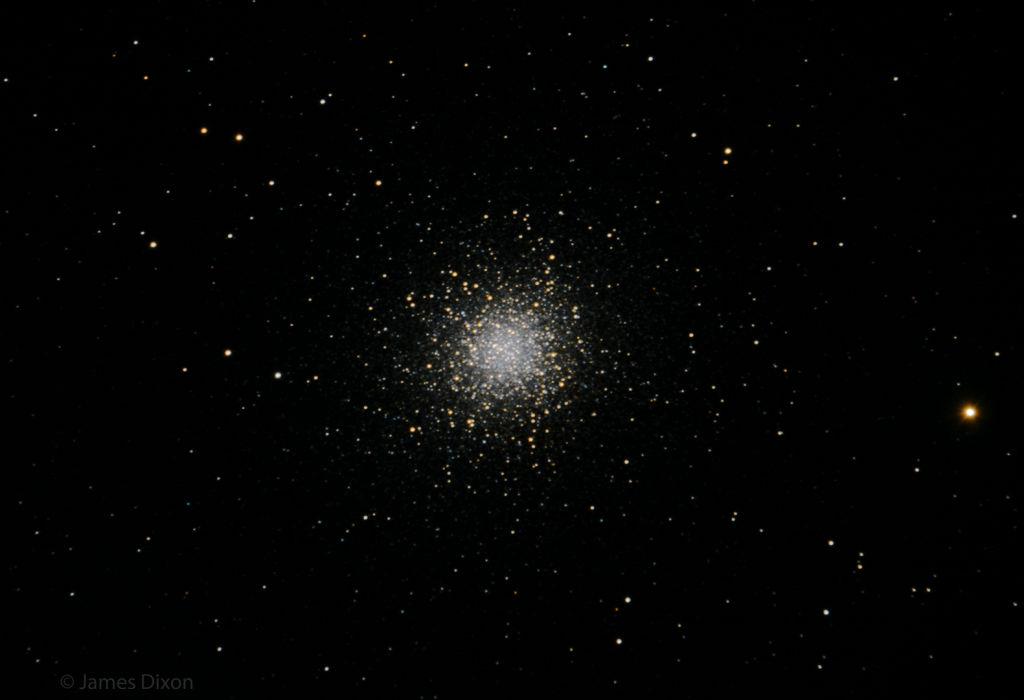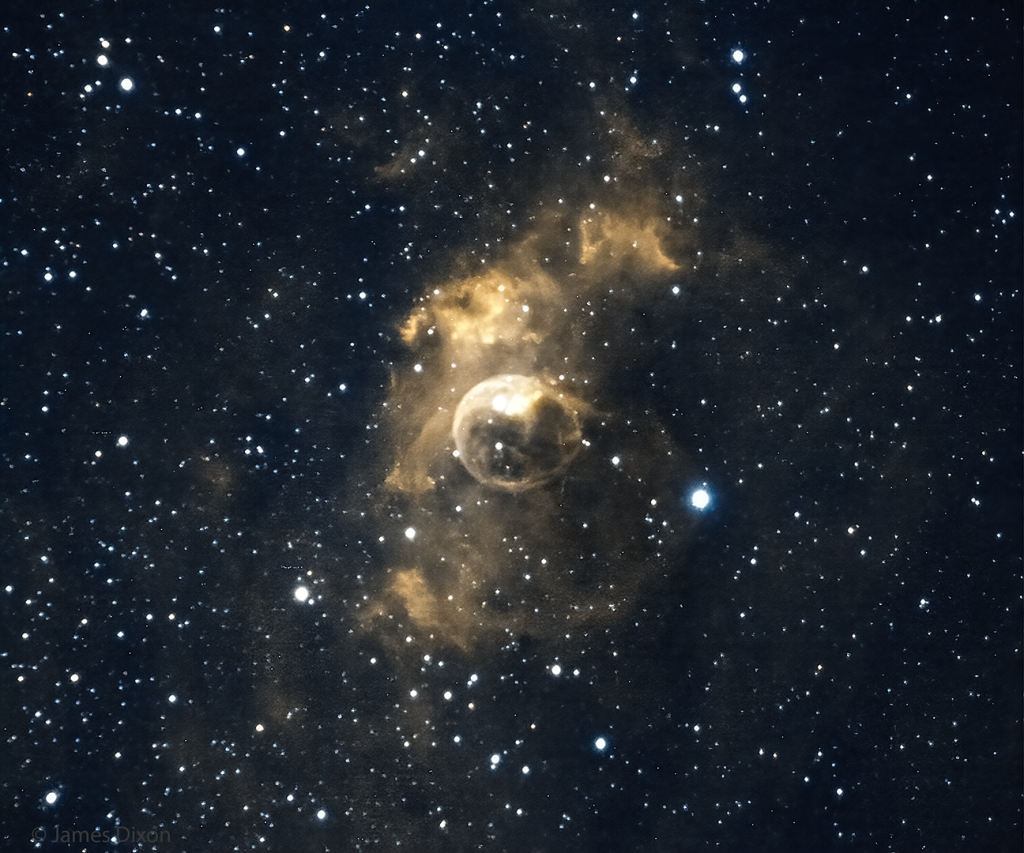
It was a good night at the River Ridge Observatory. Haze from the forest fires out west threatened to ruin it but failed. I planned to shoot one object, as long as it worked, then go home to work the next day.
For this image I used my Starizona SCT Corrector IV and my 11″ SCT Elf. I checked and tweaked the scope’s collimation, it was off a little. The tracking seemed to be very good last night. This is a stack of 118 60 second images with my ZWO ASI294MC Pro with the Optolong LPro light pollution filter.
Messier 13 is a big ball of several hundred thousand stars in the constellation of Hercules. It is the brightest globular cluster in the northern hemisphere though there are some close second place candidates.
Fun fact: In 1974, the Arecibo Radio Telescope sent a radio message to this cluster. It was a stunt, the cluster is 25,000 light years away and is comprised of very ancient stars with little chance of anyone there listening. But who knows, in 24,953 years maybe someone will be there.


